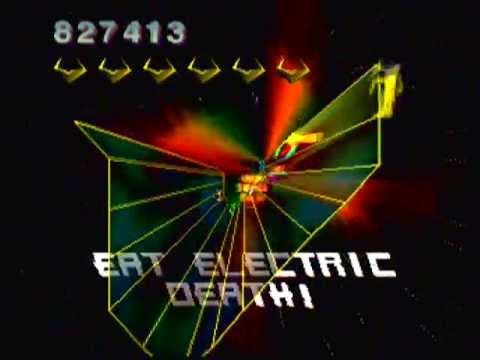PS1 at 20: Fluid's symphony of drugs, dolphins and drum'n'bass
Heavy.
If there's a more ubiquitous cliché about PlayStation's impact on the gaming landscape than they-put-Wipeout-in-clubs-and-made-games-cool, then I've temporarily forgotten it. A couple of things about that cliché, though. One: it's a cliché for a reason, because it really was a moment. Not the PR stunt, but the game itself, a sharp-as-tacks racer with serious technological chops elevated to the next level by its hypnotic electronic soundtrack. If it hadn't been done to death already, it's the most truthful pick I could make for a nostalgic article like this one: obsessively time-trialling, dipping the long nose of my anti-grav ship over the crest of that big dipper on Altima VII, almost physically sensing the moment of weightlessness and the stomach-flipping lurch before the descent, then the mounting engine roar over the intensifying beats of P.E.T.R.O.L. or Afro Ride as I hurtled down into the tunnel and... well, you can only answer this cliché with another one: games never looked the same again.
The second thing to note is that in this story, "club culture" and "cool" are at least 50 per cent euphemism. What we are really talking about is drugs: that wonderful, terrible hour in the mid-90s when gaming's first generations hit late adolescence and student bedsits and discovered the unhealthily compelling synergy of playing video games and getting off their heads on psychoactives. The PlayStation was gaming's Woodstock moment. We were sat on cheap sofas in cardigans riddled with blim holes, juggling joypads and precariously balanced ashtrays in our laps, but we might as well have been dancing naked in a field, covered in mud.

Video games, by nature, always had a strong leaning towards surrealism and occasional psychedelic outbursts. But the PlayStation was positively awash with trippy games and 'music experiences' underscored by jackhammer drum machines that seemed custom-designed to experience when high on cannabis, ecstasy or mushrooms. Wipeout was one. Another personal favourite was Tempest X3, a port of the Atari Jaguar's astonishing Tempest 2000: the one moment in history when hippy coder Jeff Minter and the popular zeitgiest have been in sync, and a game best played in a kind of fugue state where the brain does not even try to parse the engulfing kaleidoscopic smears on the screen and just lets the eyes and the hands get on with it. Superzapper Recharge.
I also have an abiding fondness for Fluid. If the name doesn't ring a bell, watch the below video of the demo, which you almost definitely played and were deeply confused by. There, it's coming back, isn't it? In all honesty, my own memory of it is dim (the reasons for that should be pretty clear by now) and was only stirred the other day when Chris Donlan showed me its latest ancestor, Panoramical. Something in its soundtrack unearthed ancient triggers and instantly transported me back to this 1996 Sony Japan game.
Fluid was a sort of halfway house between a game and a music sequencer. It wasn't particularly great at either. It was barely a game, and later music creation software like Music 2000 was infinitely more flexible and capable. But that was too professional and complex for me. I'm no musician, and what I loved about Fluid was how it eased my addled brain into constructing some tolerable ambient d'n'b with its simple building blocks and nonsense new age visualisation.
The game's hilariously tacky head-shop premise was this: you are a drum'n'bass dolphin. Swim around 3D "Cruise Stages" called things like Abyss and Coral to collect themed samples. Combine these in a basic sequencer - called a "Groove Editor" - to make your own tracks (though your claim to authorship is pretty tenuous, since all the loops are premade). Then resume dolphin form to swim through your own song, improvising frequency and modulation by swimming up and down or left and right. You had to be pretty stoned to find this enjoyable. But if you were stoned enough, it could be really enjoyable.
If you wanted to argue for Fluid's influence and importance, you could make a reasonable case for it as a crude precursor of Harmonix's FreQuency and Amplitude, which were in turn a vital foundation of the music game explosion of the 2000s. But I'll leave that argument to a more serious retrospective to make. For me, Fluid is best thought of as an appropriately ramshackle and ridiculous product of its time. It's a fond reminder of a wayward time in my life; it's an inconsequential bit of digital flotsam that is nonetheless quintessentially 90s. It sums up the spirit of the time, when a generation of techno-hippies was born and, as all hippies must, left good taste and good sense behind as they used their weird machines to adventure into new headspaces. So flip that PlayStation upside down and roll another fat one for the breakbeat spaceships, the acid house aliens and the drum'n'bass dolphins. We won't see their like again.


